When you’re on the hunt for the perfect engagement ring, understanding the various ring settings can make a huge difference in how the ring looks and lasts.
Whether you’re shopping for a diamond engagement ring or a gemstone ring, finding the perfect setting can really bring out the beauty of the gem.
In this guide, we’ll explore different engagement ring settings, focusing on how they showcase and protect the center stone, and discuss which setting might be best for you based on your preferences and style.
What is an Engagement Ring Setting?
An engagement ring setting refers to how the center diamond or gemstone is mounted on the band.
Each setting adds its unique flair to an engagement ring. Some are more secure, while others make the diamond or gem appear larger.
Settings play a crucial role in defining the overall style and appearance of the ring. Engagement ring settings come in a variety of styles, each designed to enhance both the beauty and security of the center stone.
Engagement Ring Setting Types
Each setting imbues the ring with its own unique style, offering thousands of customization possibilities for an engagement ring.
Keep in mind that the setting is different from the band. Some settings look much better with a white gold or yellow gold band.
Below are some of the most popular setting styles.
Prong Setting
Also known as the solitaire setting, this features 4-6 metal prongs, that hold the diamond in place, allowing maximum exposure and light to the stone, enhancing its brilliance.
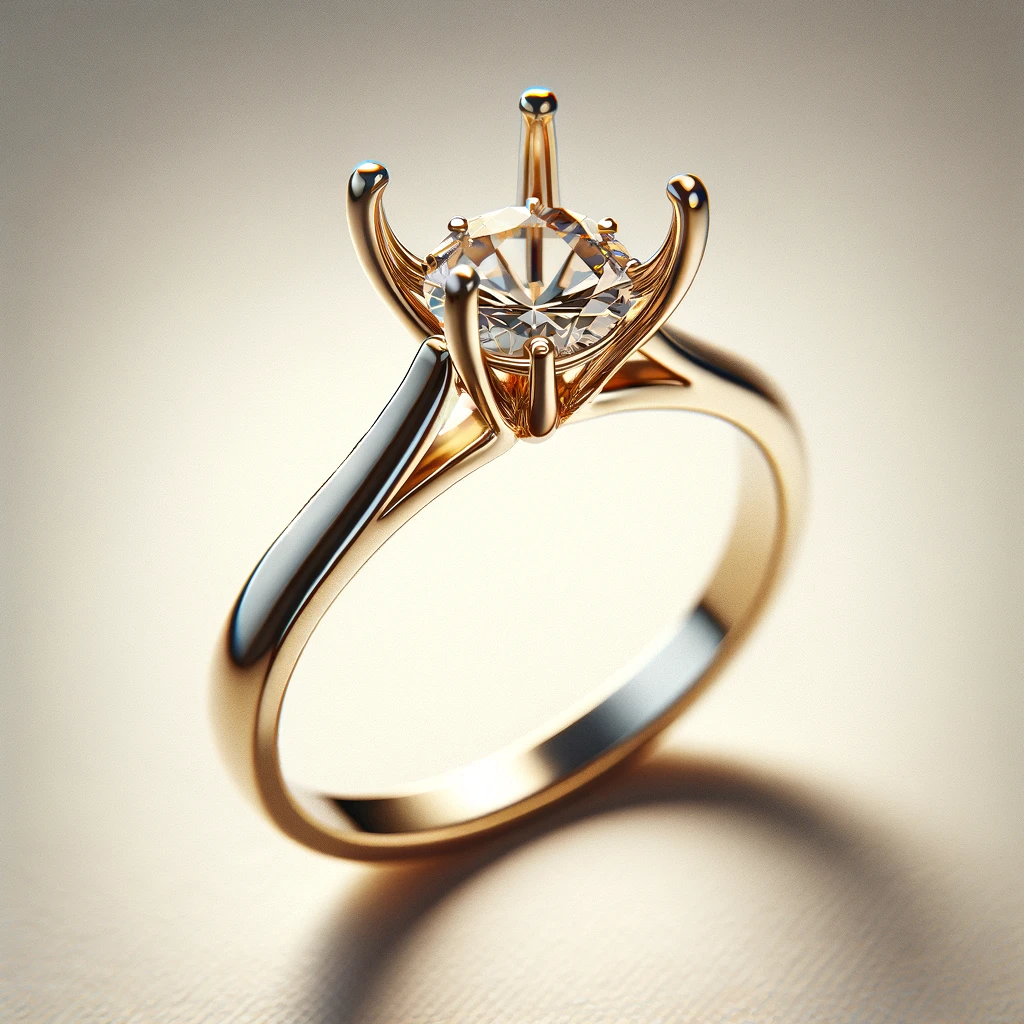
Pros
- Classic Elegance: Timelessly stylish, highlighting the central diamond.
- Focus on the Diamond: Prong settings elevate the diamond above the band. This makes the diamond more prominent and allows it to catch more light, enhancing its brilliance and apparent size.
- Versatile: Matches easily with different styles of bands and wedding rings.
- Easy Maintenance: Simple design facilitates cleaning and upkeep.
Cons
- Less Protection: The diamond is more exposed and prone to damage.
- Common Design: Lacks uniqueness, as it is a trendy choice.
- Demands High Quality: Imperfections are visible since the diamond is the focus and highlight of the ring.
Halo Setting
This setting surrounds the central stone with a circle (halo) of smaller diamonds to enhance its sparkle and make it appear larger. It adds a glamorous and vintage feel to the ring.
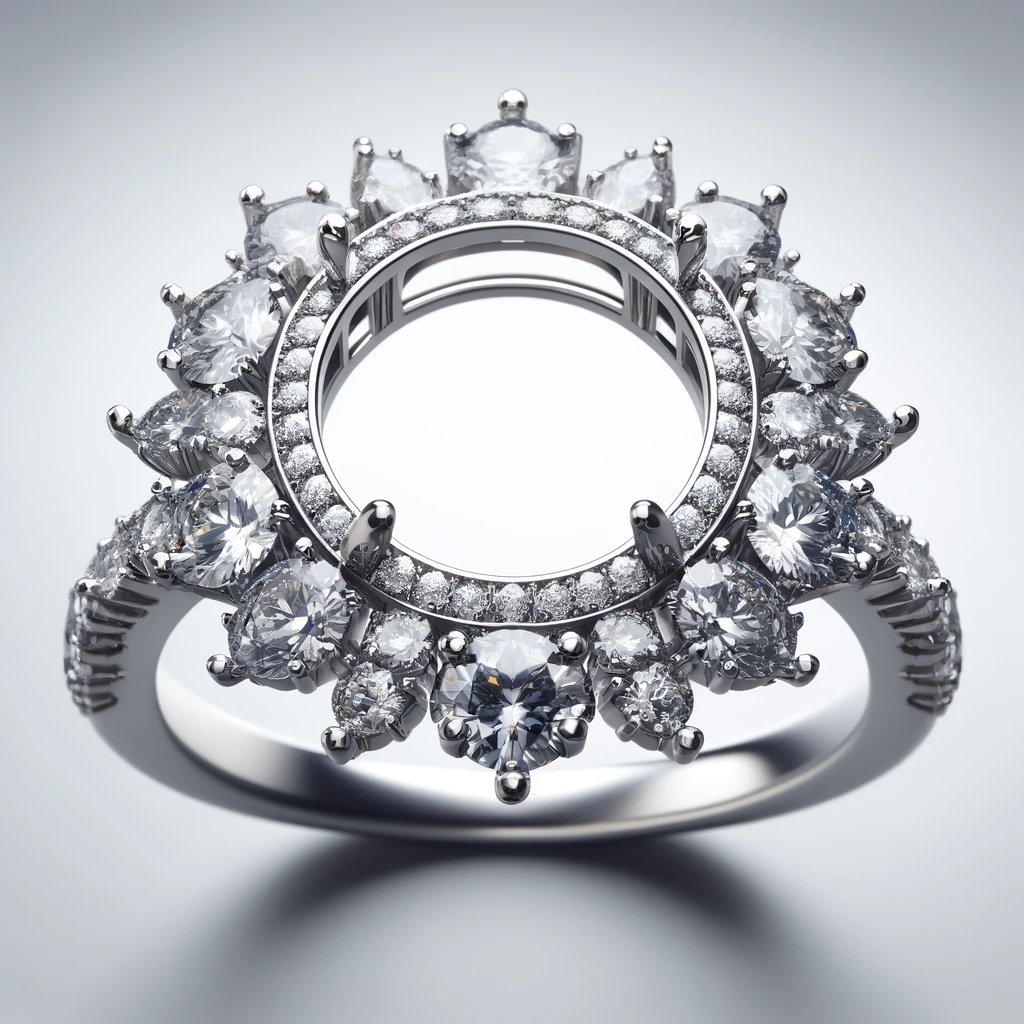
Pros
- Enhanced Appearance: the halo of small diamonds visually extends the surface area of the center gemstone, making it appear larger than it is.
- Versatile Design: Fits any cut of gemstone.
- Extra Sparkle: The additional gems surrounding the center gemstone reflect light onto the main gemstone from various angles. This interaction enhances the sparkle and brilliance.
- Protective: Protects the edges of the center stone.
Cons
- Harder to Clean: More difficult to clean due to the intricate design.
- Damage Risk: While the center stone is secure, the small diamonds can loosen or fall out.
- Higher Initial Cost: More diamonds and a complex design can increase the ring’s price.
Pavé Setting
Small diamonds are set closely together across the band, using tiny metal prongs or beads to hold the stones. This setting gives the band a sparkling effect, making the entire piece look encrusted with diamonds.
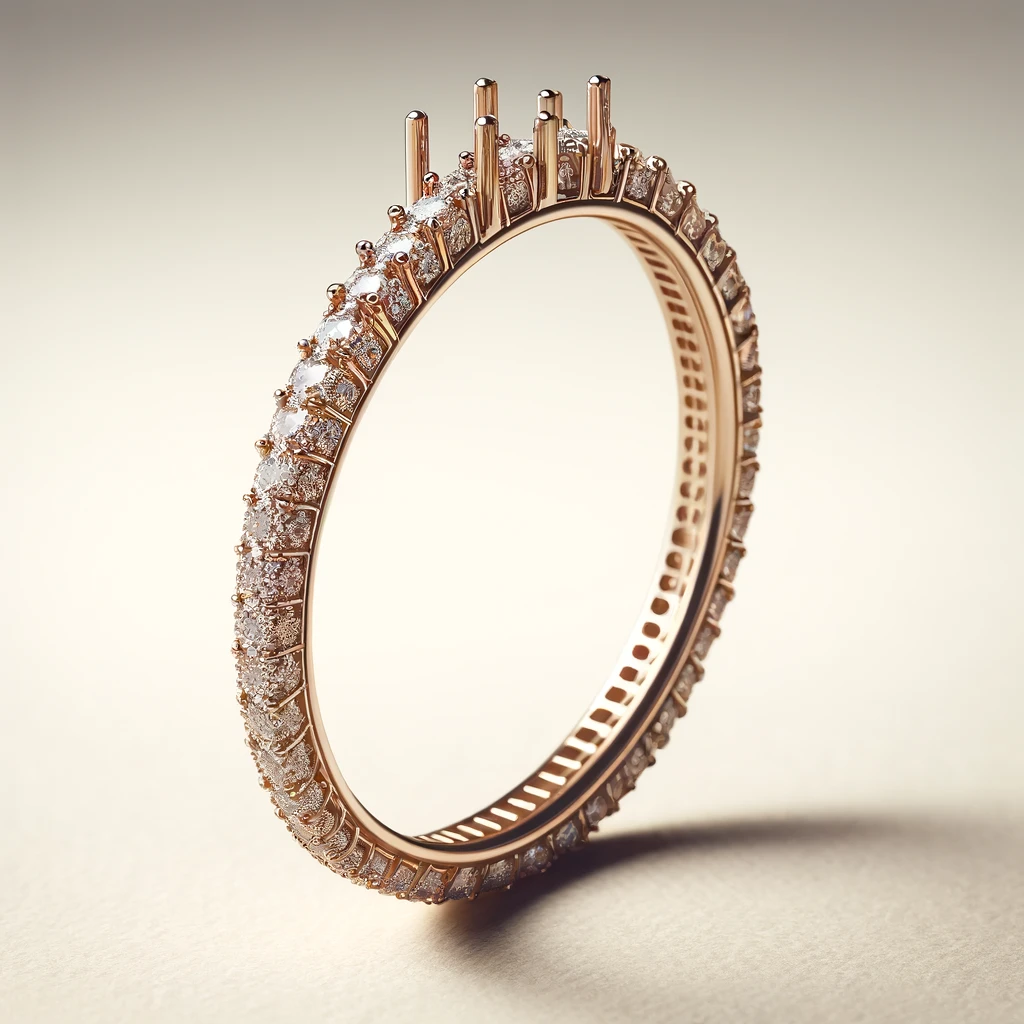
Pros
- Enhanced Sparkle: Pave settings are known for their brilliant sparkle, as the multiple small diamonds reflect light beautifully.
- Makes Center Stone Look Larger: the continuous sparkle from the pavé diamonds draws the eye across a wider area, giving the illusion that the center diamond is larger than it is.
- Versatile and Stylish: This setting can be adapted to various ring styles. Making it a versatile choice for any design preference.
Cons
- Requires Regular Maintenance: Small stones in pave settings can loosen over time and may need professional tightening and checking.
- Harder to Clean: The close setting of the stones can trap dirt and make cleaning more challenging.
- Potential for Stone Loss: There is a higher risk of losing small stones, especially if the ring undergoes rough handling.
- Difficult to Resize: Resizing a pave-set ring can be complex and sometimes impossible without compromising the design.
Bezel Setting
In this setting, the diamond or gemstone is completely encircled by a metal rim, custom-made to hold the stone securely. This provides a modern look and is a good choice for active lifestyles, as it protects the edges of the stone.
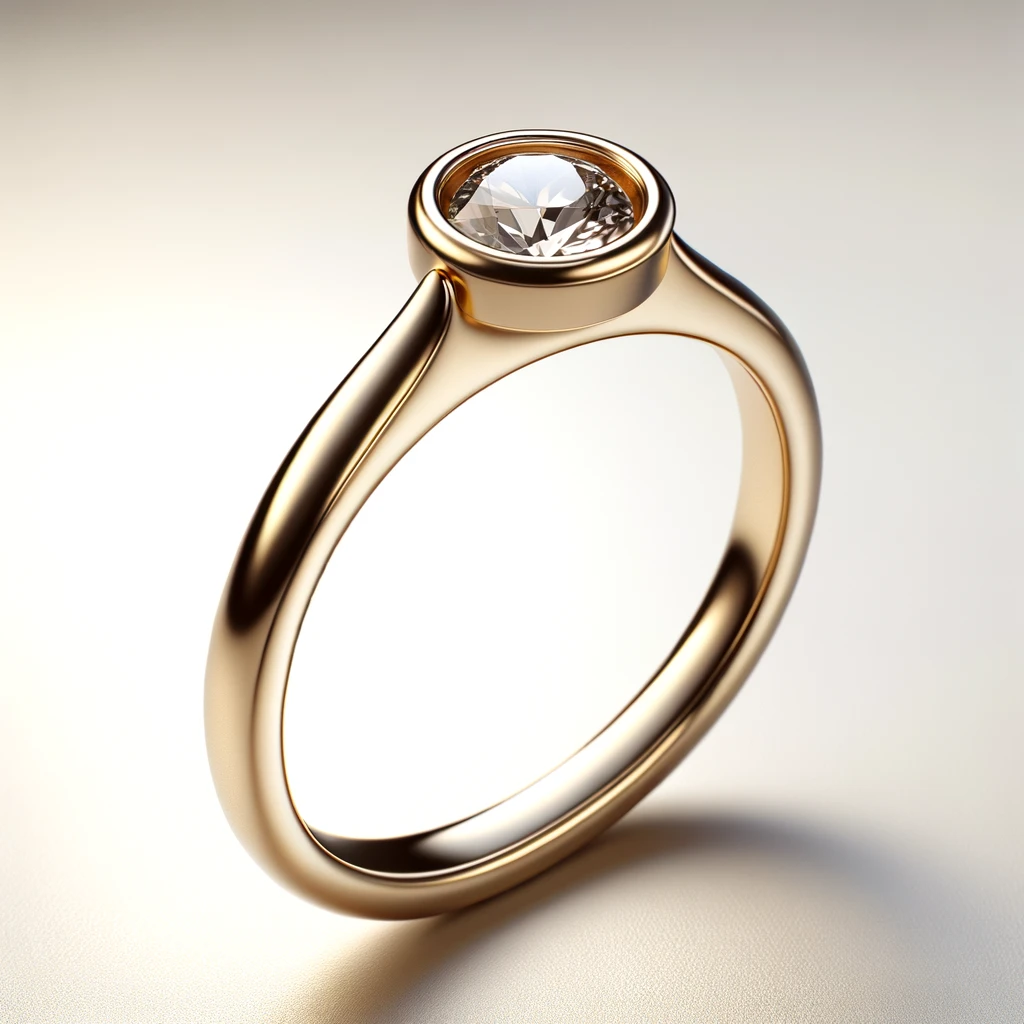
Pros
- Protection: The metal rim of a bezel setting fully surrounds the stone, providing excellent protection against chips and scratches. This is especially beneficial for softer stones or for those who lead active lifestyles.
- Modern Look: Bezel settings offer a clean, modern look that’s quite different from the traditional prong setting. It’s versatile enough to suit various stone shapes and ring styles.
- Enhanced Color: For colored gemstones, the bezel setting can enhance the perceived color intensity of the stone, as the surrounding metal can make the color pop.
Cons
- Less Light Reflection: Since the metal surrounds the stone, less light enters the stone from the sides, which can reduce the brilliance and sparkle compared to settings like the pave or prong.
- Heavier Appearance: Bezels can sometimes make a ring appear heavier or bulkier, which might not appeal to someone looking for a delicate design.
- Center Gem Appears Smaller: The bezel setting covers more of the stone than other settings, which can slightly reduce the perceived size of the stone.
- Difficult to Resize: Like pave settings, resizing a bezel-set ring can be complex and sometimes limited due to the structure of the setting.
Channel Setting
Diamonds are set between two strips of metal, creating a channel. This setting is often used for wedding bands or as side stones in an engagement ring and is prized for its sleek, contemporary appearance and the security it offers to the gemstones.
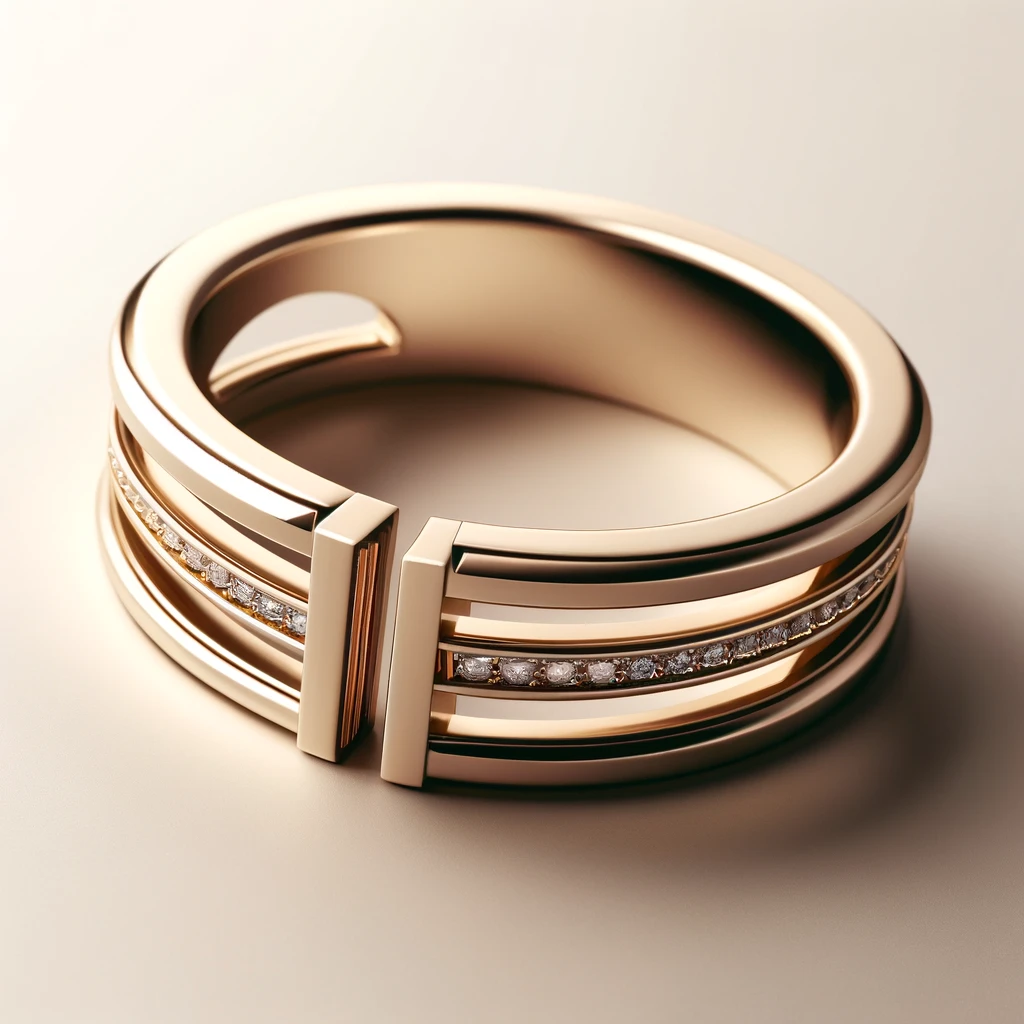
Pros
- Protection: The gemstones are well-protected by being set flush with the channel’s metal walls, which guard against nicks and scratches.
- Security: The setting provides a smooth surface with no prongs, which means it’s less likely to snag on clothing and other materials.
- Enhanced Sparkle: Channel settings add extra sparkle to a ring by incorporating multiple diamonds or gemstones along the band, enhancing the overall brilliance of the ring.
- Contemporary Look: The clean lines and modern appearance make it ideal for those who prefer a contemporary look.
Cons
- Harder to Clean: Dirt and debris can accumulate in the channel, making it somewhat difficult to clean without professional help.
- Center Gem Appears Smaller: The metal channel can obscure the sides of the stones, limiting their visibility.
- Difficult to Resize: Similar to other intricate settings, resizing a channel set ring can be difficult. Adjusting the size might disturb the alignment of the channel, affecting how the stones are set.
- Requires Regular Maintenance: While stones in a channel setting are generally secure, if the channel becomes damaged or the metal wears down, stones may become loose and risk falling out.
What Setting Shows Off a Diamond the Best?

For those looking to highlight their diamond’s brilliance and make it the centerpiece, the prong setting is an excellent choice. It minimizes metal visibility while maximizing diamond exposure, allowing the most light to enter and exit the stone. This increased light exposure enhances the diamond’s sparkle more than in other settings. Prong settings are especially effective in showcasing a diamond’s natural beauty, making them ideal for engagement rings crafted in reflective metals like white gold and platinum.
What Diamond Setting Makes the Diamond Look Bigger?

The halo setting is renowned for making a diamond appear the largest. This setting features a center diamond surrounded by a circle of smaller diamonds, which creates an illusion of greater size and enhanced sparkle. The added brilliance from the halo can make the center diamond seem up to half a carat larger.
What is the most secure engagement ring setting?
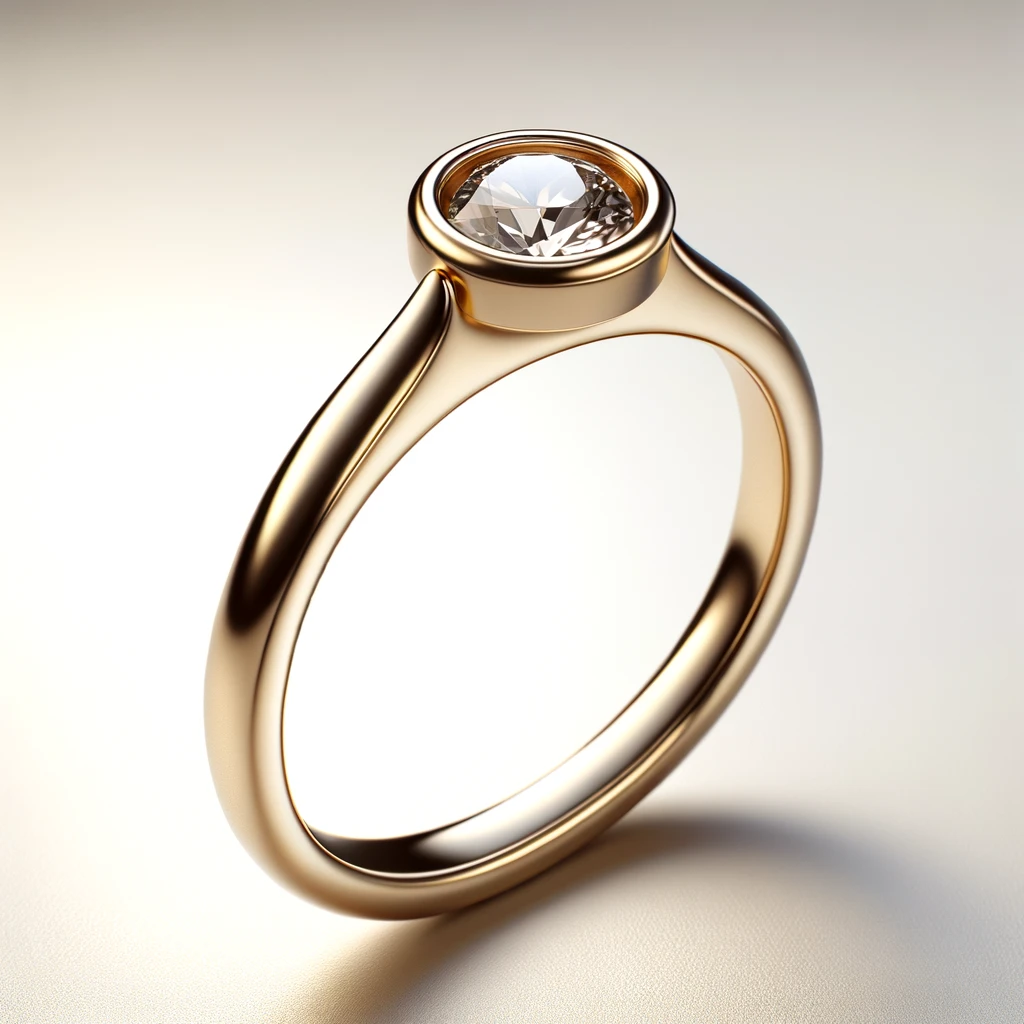
Durability is crucial, especially for an item meant to last a lifetime like an engagement ring. The bezel setting is renowned for its strength and is one of the safest settings available. In a bezel setting, the diamond is completely encircled by metal, protecting it from knocks and reducing the likelihood of the stone falling out. This setting is particularly suited for those with active lifestyles or professions that involve a lot of hands-on activities. Engagement rings with bezel settings can be crafted in both yellow gold and white gold, offering a sleek, modern look while ensuring maximum security.
Key Points
Choosing a ring can take time, so understanding each key element is important. Remember, some cuts are better suited for certain settings, while others may not work as well. Understanding the basics of a diamond will go a long way in helping you choose the right setting.
- An engagement ring setting refers to how the center diamond or gemstone is mounted on the band.
- Each setting has its pros and cons and unique ways of showcasing the center gemstone.
- You can customize a setting with the band to achieve different effects.
